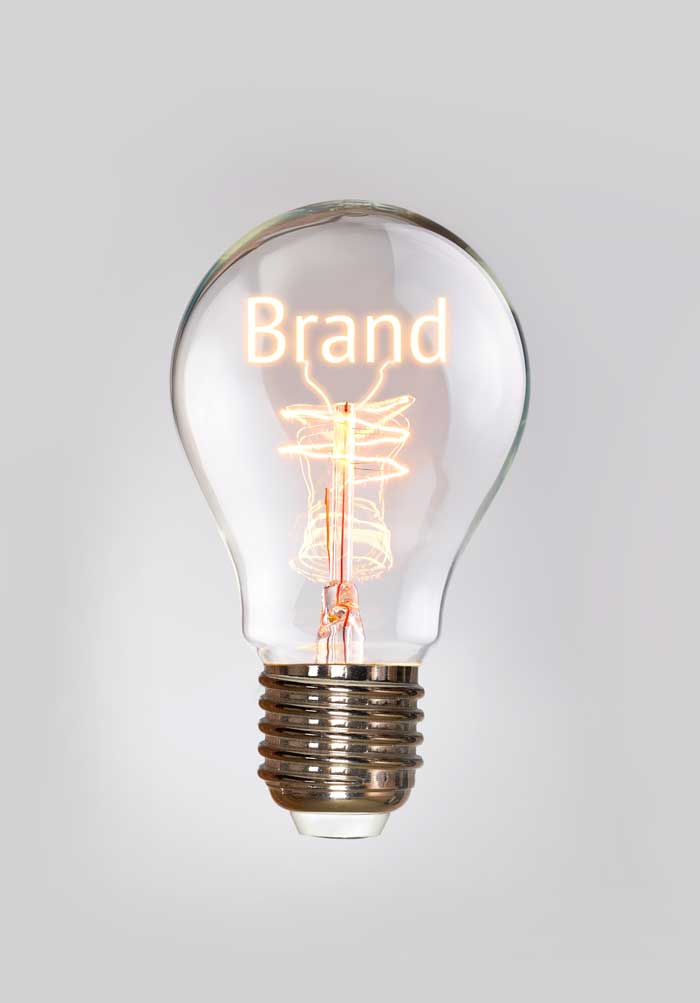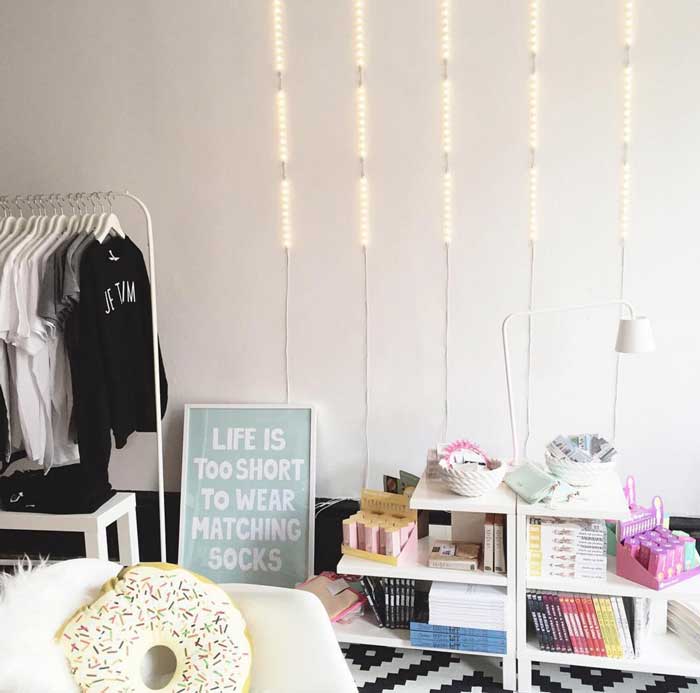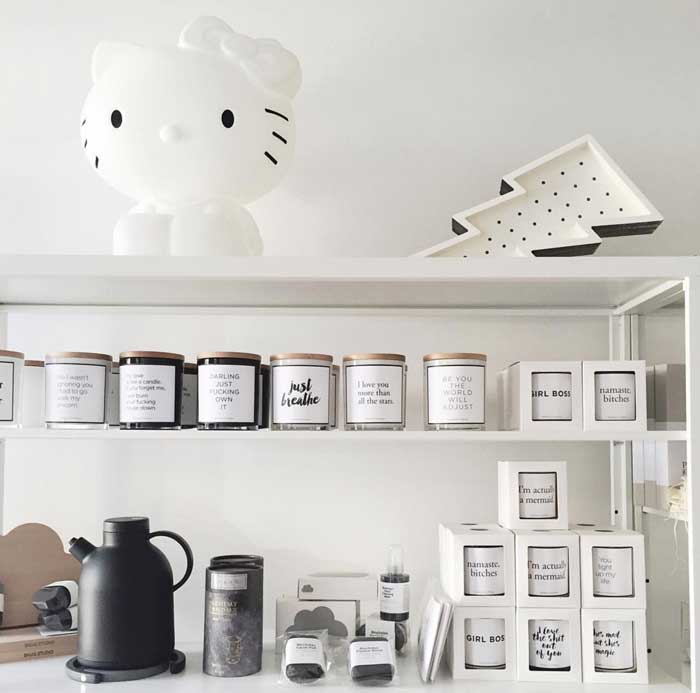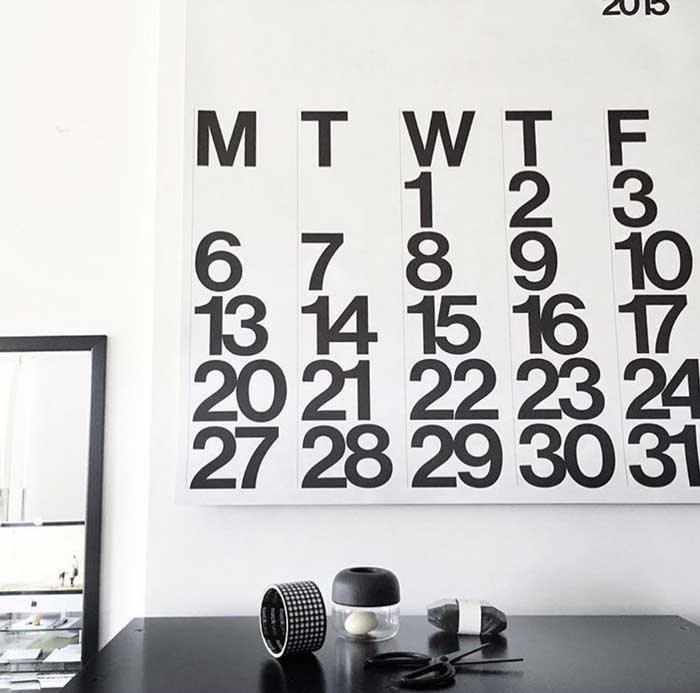Branding for Interior Designers [What You Need and Why You Need It]
 What is branding and why does it matter to an interior designer?
What is branding and why does it matter to an interior designer?
“Branding” is such a sexy, buzzy marketing word. But if you ask twenty people for a definition of the term, you’ll get twenty different answers. So, before we get into an actual list of what you need or an answer to the question “What is a brand?”, let’s talk about the why.
Why spend even two minutes of your busy day thinking about your “brand”? Why bother to decide on a strategy? Because branding has a direct effect on your revenue.
Put simply, clients are happy to pay what they truly believe your firm is worth.
In the book Kellogg on Branding by Northwestern University’s Kellogg School of Management, a simple study is described. A professor divided MBA students into three groups and asked the first group this question:
“What would you expect to pay for a pair of good quality, 18-karat-gold earrings with two 0.3-carat diamonds?”
The second group was asked the same question with addition of “…from Tiffany?”
The third group was asked the same question with the addition of “…from Walmart?”
The results were…pretty crazy. Adding a brand to the question drastically changed the perceived value of the exact same pair of earrings: Good quality. 18-karat-gold. Two 0.3-carot diamonds. And yet…
 UNBRANDED
UNBRANDED$550
 TIFFANY
TIFFANY$873
 WALMART
WALMART$81
The Tiffany earrings come with all sorts of brand associations. A long history, Audrey Hepburn, that precious blue box—it all elevates the perceived value of those earrings to a tidy $873. On the other end of the spectrum, the Walmart brand is strongly associated with “low prices”, which isn’t a great brand position for jewelry. When it comes to perceived value, branding matters.
Broadly speaking, a brand can be divided into two parts: visual branding and brand experience.
Visual branding is just what you think it is: logo design, font choices, consistent colors, etc. It’s a visual shortcut that says who you are as a company.
Brand experience is the part that’s a bit harder to nail down. It’s the difference between a pair of earrings having a perceived worth of $81 or $873. Or the difference between an interior design firm with clients who question every billable hour vs. another firm with a waiting list and a healthy hourly rate.
Visual branding and brand experience. You need to consider both.
What is brand experience?
As Charlene Li and Josh Bernoff state in their book Groundswell, “Your brand is whatever your customers say it is.” Or we could look at the definition given by Mr. Seth Godin: “A brand is the set of expectations, memories, stories and relationships that, taken together, account for a consumer’s decision to choose one product or service over another.” That definition is from the days of yore (2009), but it says it all.
There are approximately one zillion ways to complicate this issue, but I like to sum it up with a Mad Lib: “Oh, that’s the interior design firm that _____________.”
The blank is your brand. So fill it in.
 “That’s the interior design firm that does all of the local office spaces. They’re crazy efficient.”
“That’s the interior design firm that does all of the local office spaces. They’re crazy efficient.”
“That’s the design firm that specializes in staging. They’re the go-to in this town. They’ll increase your selling price for sure.”
“That’s the designer who leaves a box of crazy chocolates at the end of the project. She’s quirky and great, but her staff is so rude.”
“That design group is all about sleek and modern stuff. They were in Elle Decor last month. Super high end.”
Your brand is the perception of your business. It’s the promise that you make. It’s your reputation. And it’s the thing that makes you different from all of the other options for interior design in your area.
You can say how you want to be perceived, whether it’s “high-end”, “the best service in town”, “the one designer who offers ___________”. But those qualities become your brand when you live them so completely that everyone else is saying them too.
You’re more than just “an interior design firm in (your city)“. You offer a unique experience. You already have a brand.
Get a hold of your brand by defining it.
If you don’t define it, everyone else will. A brand is a big, beautiful beast that takes time and effort to build, but you can start by answering these questions:
1. Who is your target client?
As they say (and, for some reason, I like to use a heavy Brooklyn accent for this), “If you’re marketing to everyone, you’re marketing to no one.” Who you serve is part of what makes your brand interesting and memorable. Its why certain clients gravitate toward your company.
So define it. Don’t be afraid to be a specialist in some way. We could be talking about the age of your clients, an income range, residential vs commercial clients, a particular style, a need for special functionality, a certain quirkiness…or whatever else defines the client that you are really good at serving.
Our target client is______________________.
2. What is the service you provide?
Staging? Interior design that starts during the construction phase? Redesign using existing items? Kitchen design? What is it that your firm does very, very well? Yes, you can do more than one thing. But what is your brand known for?
What we do is_____________________.
3. How are you different?
If all of the interior designers in your area are cultivating the air of the unapproachable, your list might include “down to earth”. Do you excel at getting projects in on budget and on time? Are you doing something that makes the whole experience particularly amazing for the client? What, precisely, makes your service different?
For the love of everything, don’t say some vague thing like “elegance”. And let’s keep the word “chic” out of this. Get specific.
We’re different because__________________.
4. What’s the proof?
If part of your firm’s brand is the fact that you are the place to go to get a great design executed on budget and on time, then you’re going to want some supporting facts to back that up. What percentage of your projects come in at or under budget?
If being accessible and down to earth is part of your firm’s brand, what exactly does that look like for the client? Again, this is about being specific. Make it real.
The proof is__________________.
What to do with this information?
Put it all together and make sure everyone in your company knows where you stand. Maybe you’re the design firm in your area for young professionals with a modern aesthetic (target client) who need design that starts in the construction phase (service) because new buildings are going up all over your city. You know how to integrate the needs of a growing family into a sleek, modern design (how you’re different) and you can prove it by showing specific examples from your portfolio and pointing out details (proof).
This is not a paragraph that should go into an ad. It is something that you as a firm need to know so you can express it, state parts of it out loud and just generally live it. It will also help with marketing efforts (knowing who you’re talking to and what you do for them is half the battle) and provide a framework for building relationships that make sense for the brand.
Work through this exercise. See where it takes you. Distribute the results to your team.
We ____(your service)____ for ____(your target client)____. We ____(how you’re different)___, as you can see by ____(the proof)____.





What about your visual brand identity?
“Design is the silent ambassador of your brand.”
— Paul Rand
When a client or potential client sees your visual branding out in the world, the goal is to have them immediately think of your brand experience.
Without a consistent logo design, color scheme, photography style, etc., that immediate recognition simply won’t happen. Visual branding and brand experience are equally important because they work together.
Create your brand guidelines and stick with them.
In order to create a consistent, recognizable brand identity, decisions must be made. As a designer, you may love switching things up. (I’ve been there. Seriously.) But a consistent brand is a long-term business asset. It will become more and more valuable as it becomes more and more recognizable over the years.
(And, by the way, “brand guidelines” can turn novel-length or become a work of art in themselves. The Graphic Standards Manual for the NYC Transit Authority, for example, is pretty fabulous.)
You’ll want to start by defining and then consistently using the following elements:
1. Logo Design
This is the starting point for a visual brand identity. Your logo design is important because it provides a way for people to instantly recognize your business in any setting—print, social media, your website and even your invoices. One fast food restaurant looks the same as another without the giant logo. Don’t make people think.
The design of the logo itself should be appealing to the clients you want to attract. It should convey a feeling that aligns with your services. I know that sounds vague, but go back to your brand experience and use it as inspiration. A firm that serves high-end clients should have a logo that feels high-end. A firm that does edgier, artistic spaces should convey that with their logo. No need to be literal (as in…a house logo for a residential interior designer) but keep your eye on the ball when making visual branding decisions.
One more thought before we move on: A logo should look good on the tiniest little business card and also work well when scaled up for a huge banner at a trade show. Simple is generally better, but it still has to be unique. This is a job for a professional. A good graphic designer will make all of this happen and more.
2. Type



Three of the gazillion typeface options out there. Fun, right?
What will your words look like? It is amazing how much a typeface can effect the mood of things. If you’re in the process of making visual branding decisions, you’ll need two or three typefaces at most. (And really, two will do just fine.) Or you may be currently using a bouquet of different fonts across all of your marketing materials, in which case you need to edit down and create some real consistency.
A simple way to approach this is to start by choosing one for headings. (See the word “Type” at the top of this section? That’s a heading and mine are in Kepler Std Display.) Headings, both in print and on the web, can be decorative or classic or bold or funky or whatever. You’ve got room to express yourself a bit when they’ll only be used at a larger scale and for short phrases.
You will also need a typeface for body copy. (These words are body copy and the typeface is Activ Grotesk.) Style always matters, but the number one concern here is legibility, so keep it simple.
Sometimes your designer will throw in a third font—like a script or something handwritten. For the average brand, any more than three is probably too much.
Know what typefaces are being used for your brand and repeat them everywhere to create some visual consistency. Use them in your ads, on your website, on your invoices, etc.
Color
Choose a color scheme and stick with it. Even if your logo is black and white, you’ll still need one or two additional colors to round out your branding. (For those who are quietly protesting because you don’t want to sully your black and white color scheme: There will be times that you need to emphasize something—like an important button—on your website and a contrasting color is pretty much the easiest way to do that. Consider picking one that you like.) Inspiration for a color palette can come from just about anywhere.
Color Palette for HouseofFunk.com
Color Palette for Twig & Vine Design
Color Palette for RaleighMakeup.com
Color Palette for Casabella Interiors
Images
All of your images should have one thing in common: stellar quality. As I’ve said before, the most important marketing investment an interior design or architecture firm will make is in excellent photography. No photos of a great project? Or (gasp) badly lit photos of a great project? Unless I’m the client, it’s like that project never happened. “If a tree falls in the forest…”
But let’s not forget…your portfolio photos are not the only images that represent your brand. Photos of your team, your workspace, and snapshots of works-in-progress are all a part of the package. The lighting, the way things are cropped, the over-all color scheme, the content…the feeling (sorry! vague again!) should all align with your brand in a way that feels like it was done on purpose.
Kim Mandra, owner of Design Life Kids, has created a brand that extends gorgeously into every image in her online shop and every Instagram photo of her beautiful, hip children. See how the shots from her pop-up shop have the same washed out look as the shots of her daughters? Her brand is written all over these images—even when there’s no logo in site.
Some brands, like Lena Dunham’s Lenny, always use illustrations. Some brands always shoot objects from the same angle. If you look at an image and immediately think of the brand…that company is doing something right.
Other Design Elements
This is where things get extra interesting. Your visual branding can include other things—from textures to hand-drawn elements to patterns. I don’t want to overwhelm you, but “other design elements” can include pretty much anything.




The recently launched website for Makeup Artistry by Shealynn uses a jewel-like pattern in makeup colors as a design element (bottom left). We applied it sparingly, with a special appearance in the footer of every page.
Design elements like these could include anything from a neon gradient to a couple of lines drawn in a certain way. We could be talking about a repeated use of triangles, a particularly bold use of white space (ahem…Apple) or a signature pattern. Gold leaf. Anything.
One last gentle reminder: Your brand exists, whether you acknowledge it or not.
So will you own it, whip it into shape and use it to your advantage? Or will you let everyone else decide who you are as a company?
This is exciting stuff. Don’t be intimidated. You don’t need to be Nike or Coca-Cola. But you might just want to be the Nike or Coca-Cola of interior design.
So how about you? Where are you in this process? Leave a reply below and let’s discuss.










Terri Davis
| 11 March 2016Interesting point about your brand exists whether you realize it or not. And something we need to pay attention to.
curioelectro
| 12 March 2016It almost sounds like a threat, right?:) Take charge of your brand before it takes charge of you! Ha. But don’t we all know business owners who just “ended up” working with a certain niche even though they don’t love it? Or got stuck in a certain price range and known for it…when that was never the intention.
I think knowing our own brand is also helpful when it comes time to say “no” to the projects that are completely outside of it. (I say “we” and “our” here because this absolutely applies to my area of design as well.)
Melanie Crabtree
| 11 March 2016Thank you for sharing such great tips and guidance. I wish I had this information when I setup my business 12 years ago!
curioelectro
| 12 March 2016What a lovely comment! Thank you:)
Sivia
| 12 March 2016Very informative and useful advice. Separating visual and brand experience and build them side by side is the way to go. Thanks!
curioelectro
| 12 March 2016Thank you, Sivia. I think that’s where a lot of confusion around “branding” occurs. It’s such a big topic that we have to organize it a bit.
Rebecca
| 12 March 2016A great reminder to point all efforts – logos, blogs, photos – back to the same target. And to set a target in the first place!
curioelectro
| 12 March 2016Well put!
Veronica
| 12 March 2016Wow! I got so much out of your article! I identified with the section where you mentioned accessible and down to earth. I’ve been trying to make that my brand – accessible down to earth luxury. I still want my brand to have an air of luxury but not the stand off ish kind of luxury. It’s been hard putting that into words and a logo etc. I absolutely see the importance of really defining my brand. I can’t afford to have someone else define it for me.
curioelectro
| 12 March 2016That is so, so nice to hear.
It sounds like you’ve been doing some work on this stuff already. So, I say, make it official and real. Brainstorm ways to make “accessible and down to earth” a baked in, visible part of your process so you can truly become known for it. And as you take on team members (if you don’t have them already), make it part of your company culture. Please come back here with an update. I would really love to know how you decide to approach this.
Jen Pollard--Park Place Designs
| 12 March 2016Great article! I especially love the fill in the blank activity. What a great way to focus (and an easy approach to an “elevator speech”)
Elle
| 12 March 2016Great article, the earring experiment was eye opening. I’ve just gone through the process of branding and I’m excited to launch it. The brand experience after reading this I realize I have to consider more. And all of the ‘other’, especially social media elements really tend to trip me up. Thanks for the article.
Kimberly Montante
| 13 March 2016This is so useful and well written, thank you!
Rona
| 13 March 2016I’m curious about how you can find out what others in the community are saying about your business. Maybe that’s a whole other article!
Great advice.
Genay Bell Designs
| 14 March 2016Very informative, thanks!!
nagendra sharma
| 18 March 2016this is very useful and informative. thanks.
SHARON CAPEK
| 19 August 2016I made the decision to re-brand my design studio and stumbled across your article. You stated “Broadly speaking, a brand can be divided into two parts: visual branding and brand experience”.
I am still thinking this through as I also realize that without saying a word, I am my brand. I may own a design company but I am who they see. That being said, I have made the decision to start with me. That could mean anything to anyone. We are all influenced by the visual especially those of us in the field of design.
Thank you so much for writing this article. It has become my jumping off point for great things to come!
curioelectro
| 27 August 2016Sharon, I really appreciate your thoughtful, inspiring comment. Thank you for taking the time. And good luck with your branding! I’m so curious about what you decide to do with it.
Gin Treadwell
| 13 September 2017Fantastic article- very thought provoking! I like how clearly the points were broken down and examples given. I myself had a recent website update and branding ( in the form of image and content) was a high focus. Reading this article though makes me realize how much more I need to continue cultivating my brand- being vague doesn’t help anyone, least of all me!
Thanks again for the great insights!
curioelectro
| 13 September 2017Hi Gin! I clicked over to your site and I LOVE your stripes. Such a memorable look.
Colleen Cameron
| 17 February 2018Wow, a colleague of mine in one of my Facebook groups just recommended your article. She’s an interior designer but she suggested that even non-designers should read it to get some insights into branding and am I glad that I did! My first company specialises in event planning and communications and I also have a second company that supplies what we call “indigenous confectionery” here in the Caribbean.
Really loved this detailed explanation of branding and what we should be mindful of. Whew! Do I have some work to do! Thanks for clearing it up in my mind.
curioelectro
| 18 February 2018Thank YOU, Colleen—for taking the to write such a lovely, detailed comment here. I really appreciate it. And yes, I agree that most of this explanation could be applied to almost any business. I work with a variety of clients and we use the foundational ideas here over and over.
Lucía Rivera
| 7 September 2018I am starting up my own business as a strategic branding and interior design consultancy and I find everything you have shared very helpful and interesting. Thank you so much for sharing. Looking forward to read more articles in this area.
curioelectro
| 8 September 2018Fabulous! Looking forward to seeing how it comes together. That’s such a cool business model.
Alex Robert
| 16 January 2019As the market is getting saturated day by day, it is necessary to highlight your brand, it is important for people to get to know about your original designs & ideas.
Adrian Jones
| 29 March 2019I like how you said that setting yourself apart in the field of interior design is one surefire way to be able to attract clients to come to you–especially if you offer a particular service that the other designers don’t have, like if you specialize in bathroom remodeling then more people would be likely to call you up if they want their private ‘throne rooms’ to be redesigned. The same goes with interior designing: the more unique the service you offer is, the better the chance that more people would come by and avail of it, like how you would be the only one who offered hand-painted wall decorative designs on a freshly-painted white canvas wall. If I had the chance to work as an interior designer I would definitely choose my own niche service to make sure that a lot of people would avail of it when the time comes.
Onux Technologies
| 1 November 2019Hello
Thanks for posting this amazing blog. It consists of very useful information. The language you used in this is very simple & easy to understood. Post some more blogs related to “website design service in NYC”.
Thanks & Regards.